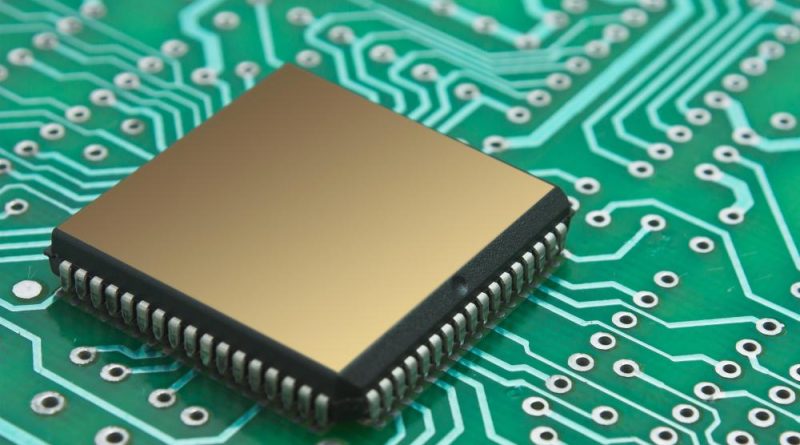The Impact of Technology on Electrical Engineering
The Impact of Technology on Electrical Engineering
Electrical engineering is one of the oldest and most influential fields of engineering. It studies, designs, and applies electrical and electronic systems, devices, and phenomena. Electrical engineers work on various projects, such as power generation and distribution, communication and networking, robotics and automation, biomedical and healthcare, and aerospace and defense.
But how has technology impacted electrical engineering? How has it changed how electrical engineers learn, work, and innovate? And what are some of the current and future trends and challenges in electrical engineering?
In this blog post, we will explore the impact of technology on electrical engineering from different perspectives. We will discuss how technology has affected the education, practice, research, and development of electrical engineering. We will also highlight some of the best electrical engineering programs in the United States that offer courses and degrees in electrical engineering.
The Impact of Technology on Electrical Engineering Education
Technology has revolutionized electrical engineering education in many ways. It has enabled new methods of teaching and learning, new tools and resources, modes of collaboration and communication, and opportunities for personalization and customization.
Some of the ways technology has impacted electrical engineering education include:
- Online learning:
Technology has enabled electrical engineering students to access high-quality education anywhere in the world. Online learning platforms such as Coursera, edX, Udemy, and Khan Academy offer a wide range of courses and degrees in electrical engineering from top universities and institutions. Online learning also allows students to learn at their own pace, time, and convenience.
- Simulation software:
Technology has enabled electrical engineering students to simulate complex electrical circuits, systems, and phenomena without physical hardware or equipment. Simulation software such as MATLAB, Simulink, PSpice, Multisim, LabVIEW, and Proteus enable students to design, analyze, test, and optimize electrical engineering projects in a virtual environment. Simulation software allows students to visualize data, results, and concepts interactively and intuitively.
- Virtual labs:
Technology has allowed electrical engineering students to conduct experiments and demonstrations remotely using online platforms. Virtual labs such as iLabs, Labster, MERLOT, and PhET provide students access to actual or simulated laboratory equipment, instruments, and data. Virtual labs also allow students to collaborate with peers, instructors, and experts from different locations.
- Mobile devices:
Technology has allowed electrical engineering students to use their smartphones, tablets, laptops, and other mobile devices as learning tools. Mobile devices can run various applications, games, videos, podcasts, e-books, and websites that can enhance the learning experience of electrical engineering students. Mobile devices can also connect to sensors, cameras, microphones, speakers, and other peripherals, enabling hands-on learning activities.
- Gamification:
Technology has enabled electrical engineering students to learn through games that can motivate, engage, and challenge them. Gamification uses game elements such as points, badges, levels, leaderboards, and rewards in non-game contexts such as education. Gamification can make learning fun, interactive, and competitive for electrical engineering students. Some examples of gamified learning platforms for electrical engineering are Circuit Jam, EveryCircuit, Logically, and Code Combat.
The Impact of Technology on Electrical Engineering Practice
Technology has also transformed the practice of electrical engineering in many ways. It has enabled new capabilities, efficiencies, and innovations in designing, developing, and applying electrical and electronic systems, devices, and phenomena.
Some of the ways technology has impacted electrical engineering practice include:
- Computer-aided design (CAD):
Technology has made it possible for electrical engineers to use computers to create, modify, analyze, and optimize their designs. CAD software such as AutoCAD, SolidWorks, Eagle, KiCad, and Altium Designer allow electrical engineers to draw schematic diagrams, lay out printed circuit boards (PCBs), simulate circuits, and generate documentation for their projects. CAD software also allows electrical engineers to collaborate with other engineers from disciplines such as mechanical, civil, and software.
- Computer-aided manufacturing (CAM):
Technology has enabled electrical engineers to use computers to control the production process of their designs. CAM software such as Fusion 360, Mastercam, Mach3, and CNC Simulator Pro allow electrical engineers to program machines such as CNC routers, lathes, mills, and 3D printers to fabricate their designs. CAM software also enables electrical engineers to monitor and optimize production quality, speed, and cost.
- Internet of Things (IoT):
Technology has enabled electrical engineers to connect their devices and systems to the Internet and each other. IoT is the network of physical objects that can communicate and exchange data using sensors, actuators, wireless modules, cloud services, and artificial intelligence. IoT can enable electrical engineers to create intelligent, interactive, and autonomous devices and systems that can improve efficiency, safety, convenience, and sustainability. Some examples of IoT applications for electrical engineering are intelligent grids, smart homes, smart cities, smart factories, and smart healthcare.
- Artificial intelligence (AI):
Technology has enabled electrical engineers to use computers to perform tasks that usually require human intelligence, such as reasoning, learning, planning, decision-making, and problem-solving. AI is the branch of computer science that creates machines and software that can mimic or surpass human intelligence. AI can enable electrical engineers to develop intelligent devices and systems that can adapt, learn, and optimize performance. Some examples of AI applications for electrical engineering are speech recognition, face recognition, machine vision, machine learning, natural language processing, and robotics.
The Impact of Technology on Electrical Engineering Research and Development
Technology has also influenced the research and development of electrical engineering in many ways. It has enabled discoveries, inventions, and achievements in electrical and electronic systems, devices, and phenomena.
Some of the ways technology has impacted electrical engineering research and development include:
- Nanotechnology:
Technology has enabled electrical engineers to manipulate matter at the nanoscale (one billionth of a meter) and create new materials, devices, and systems with novel properties and functions. Nanotechnology is the science and engineering of controlling matter at the molecular level. Nanotechnology can enable electrical engineers to create smaller, faster, cheaper, and more efficient devices and systems that can revolutionize various fields such as electronics, biomedical, energy, and communication. Some examples of nanotechnology applications for electrical engineering are nanowires, nanotubes, nanosensors, nanobatteries, nanolasers, and quantum dots.
- Biomedical engineering:
Technology has made it possible for electrical engineers to apply their knowledge and skills to medicine and healthcare. Biomedical engineering is an interdisciplinary field that combines engineering principles and methods with biological and medical sciences to improve human health and well-being. Biomedical engineering can enable electrical engineers to create devices and systems to diagnose, treat, monitor, and prevent diseases and disorders. Some examples of biomedical engineering applications for electrical engineering are pacemakers, defibrillators, electrocardiograms (ECGs), electroencephalograms (EEGs), magnetic resonance imaging (MRI), ultrasound imaging, prosthetics, implants, and wearable devices.
- Quantum engineering:
Technology has allowed electrical engineers to explore the realm of quantum physics and create new devices and systems that exploit quantum phenomena such as superposition, entanglement, tunneling, and interference. Quantum engineering is an emerging field that applies quantum mechanics to engineering problems and solutions. Quantum engineering can enable electrical engineers to create devices and systems that can surpass the limitations of classical physics and offer new possibilities such as quantum computing, quantum communication, quantum cryptography, quantum metrology, quantum sensing, and quantum simulation.
Conclusion
Technology has profoundly impacted electrical engineering in various aspects, such as education, practice, research, and development. Technology has enabled new methods, tools, resources, capabilities, efficiencies, innovations, discoveries, inventions, and achievements in electrical and electronic systems, devices, and phenomena. Technology has also created new opportunities, challenges, and trends for electrical engineers in the present and future.
To pursue a career in electrical engineering, you must obtain a degree from an accredited institution. However, with so many options available, how do you choose the right electrical engineering program?
Our next blog post will provide tips and guidelines on selecting the best electrical engineering program that suits your needs and goals. We will cover the following topics:
- The different levels and types of electrical engineering degrees
- The factors to consider when choosing an electrical engineering program.
- The best electrical engineering programs in the United States
Frequently Asked Questions (FAQs)
1. How has technology impacted the field of electrical engineering in recent years?
- Technology has led to significant advancements in electrical engineering, including faster processors, more efficient power systems, and smarter automation.
2. What role does digital technology play in electrical engineering?
- Digital technology has revolutionized electrical engineering, enabling digital signal processing, microcontrollers, and digital communication systems.
3. How has automation and robotics affected electrical engineering practices?
- Automation and robotics have increased efficiency in manufacturing, testing, and maintenance processes, reducing human error and enhancing precision.
4. Can you explain the impact of artificial intelligence (AI) on electrical engineering?
- AI has improved control systems, data analysis, predictive maintenance, and optimization in electrical engineering applications.
5. How has the Internet of Things (IoT) influenced electrical engineering practices?
- IoT has led to the development of interconnected devices and systems, enhancing monitoring, data collection, and remote control capabilities.
6. What are the implications of renewable energy technologies on electrical engineering?
- Renewable energy technologies have spurred innovation in power electronics, grid integration, and energy storage solutions.
7. How has technology improved electrical safety in the field?
- Technology has led to advanced safety systems, such as arc fault detection, ground fault protection, and smart circuit breakers.
8. What role does software development play in electrical engineering now?
- Software development is integral for designing control algorithms, simulating electrical systems, and managing data in modern electrical engineering.
9. How has technology impacted electrical engineering education and training?
- Technology has enabled online courses, virtual labs, and simulation tools, making electrical engineering education more accessible and interactive.
10. Can you explain the impact of 3D printing on electrical engineering prototyping and design?
- 3D printing allows rapid prototyping of electrical components and enclosures, reducing development time and costs.
11. How has technology influenced the sustainability aspect of electrical engineering?
- Technology has led to energy-efficient designs, renewable energy integration, and smart grid solutions, contributing to sustainability.
12. What challenges has the rapid pace of technological change posed for electrical engineers?
- Keeping up with emerging technologies and the need for continuous learning are key challenges for electrical engineers.
13. How has technology affected the job market for electrical engineers?
- Technology has expanded job opportunities, particularly in emerging fields like IoT, AI, and renewable energy.
14. Can technology help electrical engineers work remotely or in distributed teams?
- Yes, technology enables remote collaboration, real-time monitoring, and data sharing, making remote work more feasible.
15. What is the future outlook for the impact of technology on electrical engineering?
- Technology will continue to drive innovation, creating new possibilities and challenges for electrical engineers as they adapt to evolving tools and methodologies.Stay tuned for more information on choosing the right electrical engineering program for you! 😊




